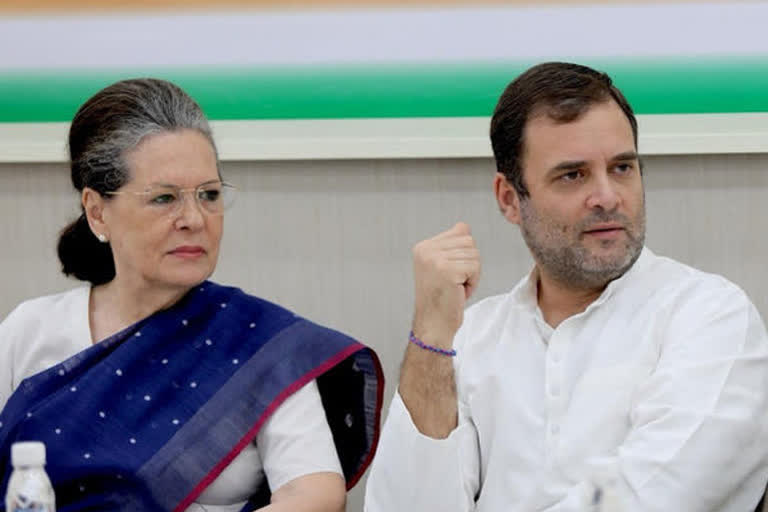New Delhi: As the Congress' top decision-making body CWC met virtually to discuss the contentious leadership issue on Monday, reports of friction within the party once again emerged, with a section demanding collective leadership and another reposing faith in the Gandhi family.
However, turmoil within the Congress party is nothing new, as there have been several instances of dissent against the leadership, with many leaders breaking away from the party to float new parties.
Presently, the Congress has been out of power for the last six years - the second longest period after the eight years it was out of power between 1996 to 2004.
Here are the senior Congress leaders who faced dissent from their own party colleagues in the past:
SONIA GANDHI
Before the 1999 Lok Sabha elections, Sharad Pawar, PA Sangma and Tariq Anwar raised a banner of revolt, and were subsequently removed from the party. Later in 2001, Jitendra Prasada threw a challenge as he contested against Sonia for the Congress president post, but lost.
SITARAM KESARI
In 1998, there was a rebellion against then Congress president Sitaram Kesari. However, the revolt was organised by Sonia Gandhi loyalists who wanted her to take over the party reins.
Read: Kapil Sibal withdraws tweet after Rahul 'personally' clarifies remark
PV NARASIMHA RAO
During the early 1990s, there was a rebellion against PV Narasimha Rao, who was the Prime Minister then. The rebellion resulted in ND Tiwari and Arjun Singh breaking away from the Congress and launching a new party.
RAJIV GANDHI
Even in 1987, the Congress faced a crisis when it was in power. VP Singh, who as Finance Minister and later as Defence Minister in the Rajiv Gandhi government, raised questions over corruption, was first ousted from the Cabinet, and then from the party. Singh then launched the Jan Morcha with several other disillusioned Congress leaders.
INDIRA GANDHI
In 1969, the tussle between Prime Minister Indira Gandhi and the old guard known as the 'syndicate' escalated when she threw her weight behind independent candidate VV Giri in the Presidential election. Congress' official candidate, Neelam Sanjiva Reddy, lost and the party split after then party president S Nijalingappa expelled Indira Gandhi.
Later in 1977, the Congress' post-Emergency defeat triggered a crisis when then party president K Brahmananda Reddy and YB Chavan, its leader in Parliament, turned against Indira. The party split once again, with Indira engineering it.
The party had suffered a split even before the elections with Jagjivan Ram and others like HN Bahuguna forming a new party - Congress for Democracy.
Read: Congress has revived after Scindia left: Digvijaya Singh
JAWAHARLAL NEHRU
The country's first prime minister, Jawaharlal Nehru too had to struggle against the likes of Purushottam Das Tandon, KM Munshi and Narhar Vishnu Gadgil. At the AICC session in September 1950, Tandon announced his decision to contest for Congress president. It was the first open election for the post in independent India.
In July 1951, the crisis came to a head again when Nehru resigned from the CWC. With the first general election a year away, Tandon finally relented by resigning, and Nehru was elected the Congress president at the AICC session in Delhi in October.



